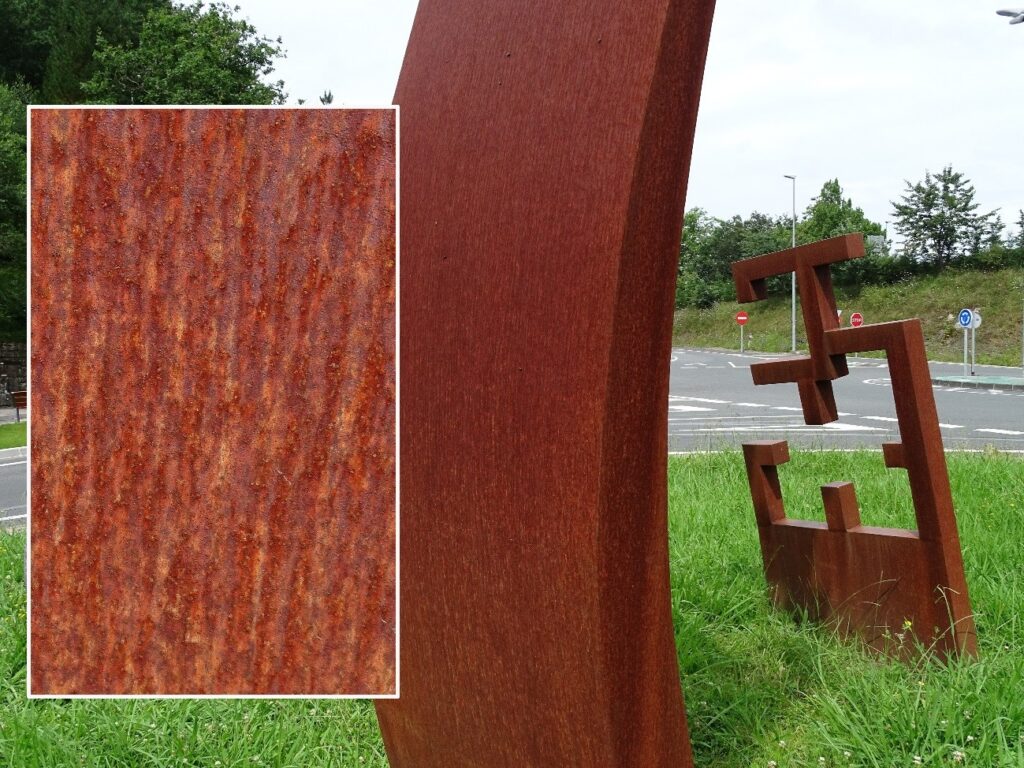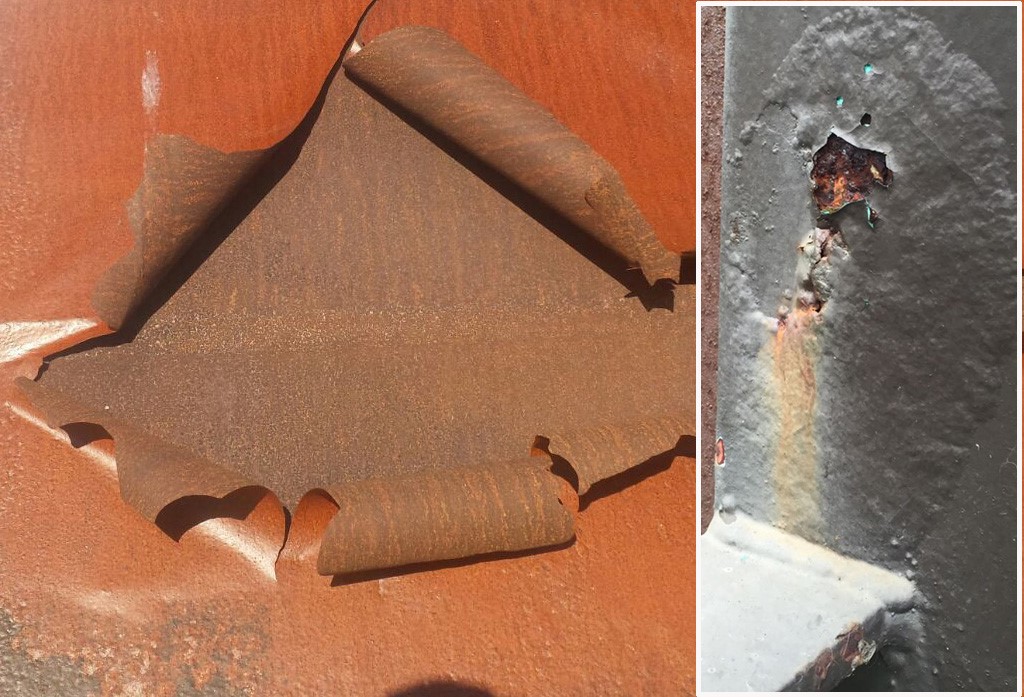A significant work line in the activity of the IK4-AZTERLAN Metallurgy Research Centre is centered in the analysis of any kind of failure methods and pathologies regarding corrosion in metallic components. It is a relatively common issue to address claims based on “deficiencies” of installed Corten steel, which are just a reflection of the average behavior of the same, mostly regarding “problems” such as stains or uneducated tonality. But, even more usual than these are the problems related to defective surface treatments of Corten steel, either because they are inappropriate, or because they have been poorly applied. When these occur, far from constituting a suitable solution, they tend to increase the complexity of the problem.
Based on the experience of IK4-AZTERLAN, the practice of applying a layer of varnish on the Corten steel is considered especially inadvisable due to the risk it entails as a lasting solution. Environmental conditions affect the varnish layer, which will gradually degrade over the time. It is a short-term solution that prioritizes the aesthetic function of steel (avoid stains and stabilize the appearance of the patina) but it invalidates the corrosion resistance properties of the steel itself and makes it an inadvisable solution, from a durability and integrity point of view.





